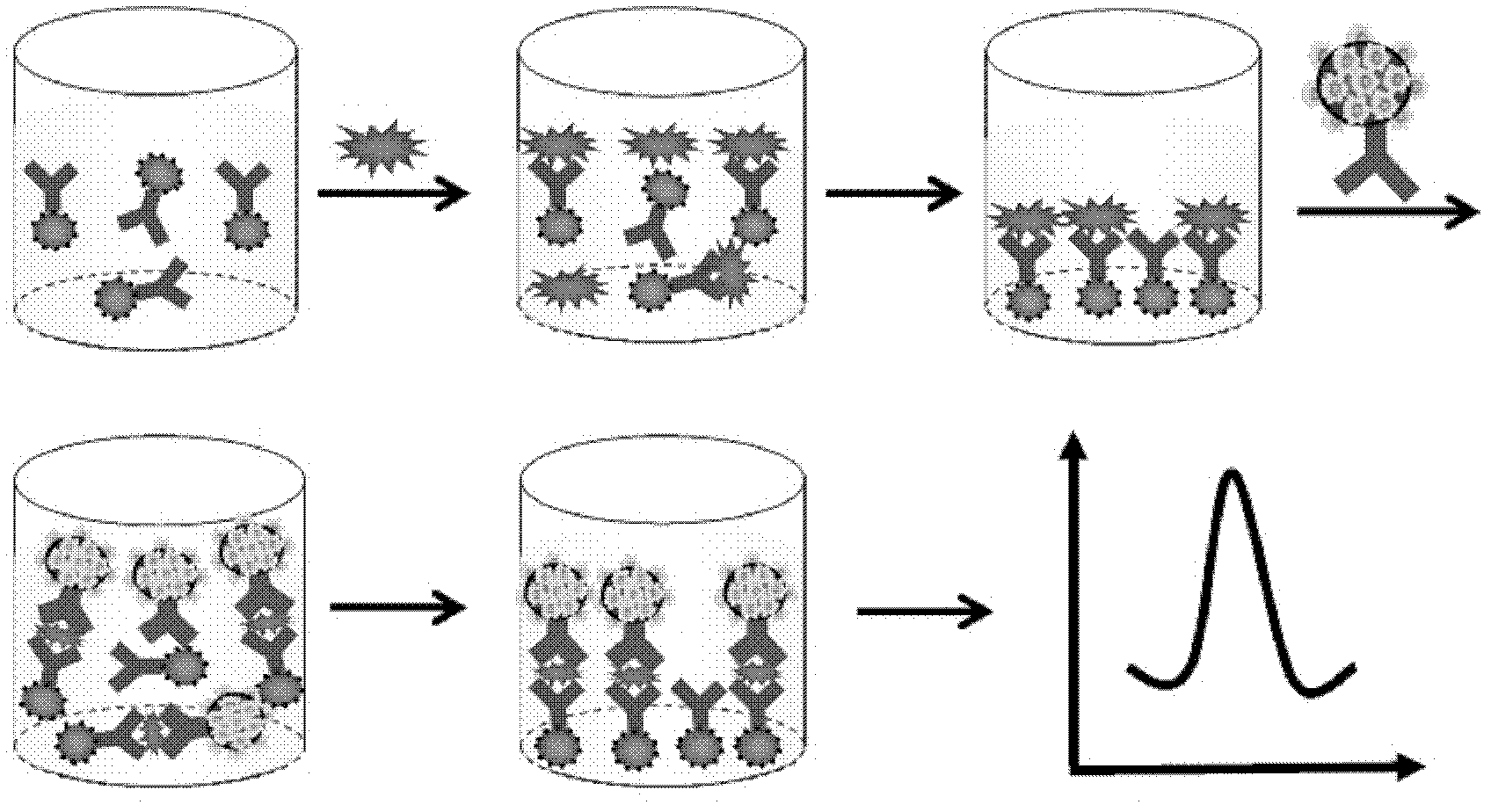Electrochemical immune sensor for phosphating protein
A phosphoprotein, electrochemical technology, applied in the direction of material electrochemical variables, scientific instruments, instruments, etc., can solve the problems of unfavorable on-site detection of grass-roots use and popularization, to avoid sample processing process, good reproducibility, good selection sexual effect
- Summary
- Abstract
- Description
- Claims
- Application Information
AI Technical Summary
Problems solved by technology
Method used
Image
Examples
Embodiment 1
[0029] Example 1 Phospho-p53 protein 15 electrochemical immunoassay
[0030] Add 10 μL of 1.0 M hydrochloric acid to the centrifuge tube to make the Pb 2+ Released from the inner cavity of LPA; then add 50 μL of acetic acid buffer solution containing 0.5 mg / L Bi, the concentration of acetic acid buffer solution is 0.2M, pH is 4.6, after mixing for 2 minutes, the magnetic nanoparticles (MPs) are magnetically separated; 50 μL of supernatant was dropped on the surface of the printed electrode, enriched at -0.9V for 2 minutes, and then recorded the SWV curve from -0.9-0.3V, the potential increment was 4mV, the amplitude was 25mV, and the frequency was 15Hz; the lead ion was obtained at -0.56V Stripping voltammetry peak. By detecting Pb encapsulated in lead phosphate-apoferritin (LPA) 2+ Determination of the anodic dissolution signal of the phosphoprotein phospho-p53 in samples 15 content. The experimental results are as image 3 .
Embodiment 2
[0032] Add 25 μL of phospho-p53 with different concentrations (0.02, 0.05, 0.1, 0.2, 0.5, 1.0, 2.0, 5.0, 10, 20 ng / mL) into ten 1.5 mL plastic centrifuge tubes 15 . Formation of LPA-p53 after immune reaction 15 Ab 2 -CNS / phospho-p53 15 / MPs-Ab 1 immune complexes, and then performed electrochemical immunoassays, the experimental results are as follows Figure 4 .
PUM
 Login to View More
Login to View More Abstract
Description
Claims
Application Information
 Login to View More
Login to View More - R&D
- Intellectual Property
- Life Sciences
- Materials
- Tech Scout
- Unparalleled Data Quality
- Higher Quality Content
- 60% Fewer Hallucinations
Browse by: Latest US Patents, China's latest patents, Technical Efficacy Thesaurus, Application Domain, Technology Topic, Popular Technical Reports.
© 2025 PatSnap. All rights reserved.Legal|Privacy policy|Modern Slavery Act Transparency Statement|Sitemap|About US| Contact US: help@patsnap.com



